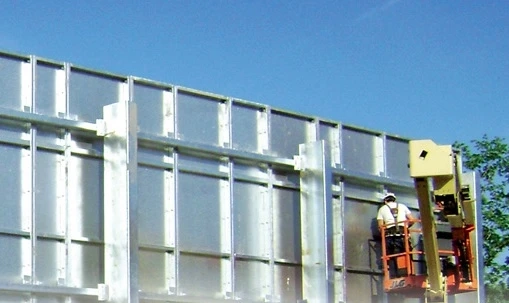It is a common misconception that passive and active fire protection are mutually exclusive. In reality, you need both types of systems to provide the best possible safety for your facility. We\'ll compare active and passive fire protection and explain why having both is best for protecting your employees and property.
What Is Active Fire Protection?
Active fire protection (AFP) systems, including sprinklers, pumps, and ventilation fans, require power to operate. These systems can detect a fire and then take action to extinguish or contain it.
Advantages of Active Fire Protection
AFP systems are effective at putting out fires quickly. This can minimize damage to your facility and help protect your employees and equipment.
You can also use AFP systems to control the environment around a fire. They help prevent the spread of smoke and toxins and make it easier for firefighters to extinguish the blaze.
Disadvantages of Active Fire Protection
AFP systems require regular maintenance and testing to ensure they are working correctly. If an AFP system fails, it could allow a fire to start or spread unchecked.
Also, fire, water, or smoke can damage AFP systems. This can render them ineffective and cause more damage to your facility.
What Is Passive Fire Protection?
Passive fire protection (PFP) systems do not require power to operate. This type of system includes fire doors, walls, and ceilings. PFP systems can help contain a fire and prevent it from spreading. In addition, PFP systems can serve as a barrier to smoke and toxins.
Advantages of Passive Fire Protection
PFP systems are reliable because they don\'t need electricity. This makes them ideal for use in areas where power may be unavailable or unreliable. PFP systems are also low maintenance and can last for many years with little to no upkeep.
Disadvantages of Passive Fire Protection
PFP systems, no matter how durable, will eventually succumb to fire. Water and other elements can also damage them. In addition, PFP systems may not provide adequate protection from smoke or toxins.
Why You Need Both Passive and Active Fire Protection
The best method to assure safety is to have both active and passive fire protection systems. AFP systems can quickly extinguish a fire, while PFP systems can help contain it. However, PFP systems are more reliable and require less maintenance than AFP systems. It’s best to have both systems to provide redundancy if one system fails.
Get Reliable Fire Protection Equipment From DuraSystems
You should work with an experienced AFP and PFP systems provider to ensure that your facility has adequate protection. DuraSystems is a leading provider of passive fire protection systems. We offer a wide range of passive fire safety solutions, including fire-resistant boards, walls, and panels.
For more information about our products or to discuss your specific needs, contact us today. Our experienced team will be happy to help you select the best products for your facility.


